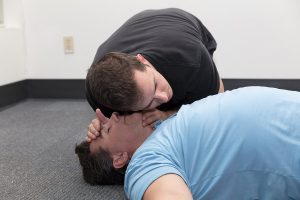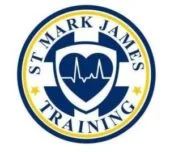Performing CPR without mouth-to-mouth resuscitation is not enough to convince most Canadians to execute CPR on strangers.
The latest guidelines published in 2010 recommend that bystanders without training who witness an adult collapse should do away with the “rescue breaths” and focus on deep and rapid chest compressions instead. The reason for this is that evidence does not support mouth-to-mouth to make any difference.
Nevertheless, a new survey indicates that while Canadians, and women are more comfortable with hands-only CPR, the eagerness to help depends on the “victim characteristics”. Only half are ready to try to save the lives of strangers or “unkempt individuals”.
What does studies reveal?
The study also exposes some deep and fundamental gaps in knowledge on CPR that might contribute to the inaction of bystanders at the scene of a cardiac arrest.
Most of those who took part in the survey could not identify a cardiac arrest. Only 41% knew it means that the heart ceases to beat. Around 20% confuse it with a heart attack. Only 14% are aware of the new, latest CPR guidelines.
Around 40,000 out-of-hospital cardiac arrests occur yearly in Canada.

Prompt CPR and defibrillation increases the chances of survival by around 75% or higher. Nevertheless, the bystander-CPR rates rarely exceeded 30% in Canada.
Why should I perform CPR?
A main deterrent is the lip-on-mouth component. Many individuals fear on acquiring an infectious disease although the risk is remote. There has always been an issue of concern on the mouth-to-mouth aspect.
In another survey, participants were asked on how they would behave in different hypothetical scenarios. The results indicate a shift in attitudes between the old and latest CPR guidelines.
Generally, if the victim is a family member or friend, there is no significant differences in willingness to execute CPR. If the victim is a stranger, around 55% were prepared to perform hands-only CPR versus mouth-to-mouth (39%). As for “homeless/unkempt” victims, only 48% were willing to perform compression-only resuscitation.
Although people do want to help, it is not necessarily a question of not wanting to help. It is the idea of being too close to somebody. Some worry on doing it right but more on personal risk.
Part of the dilemma is CPR training which usually takes place in clean rooms with clean, asexual mannequins. The real-life scenarios are messy.
What is cardiac arrest?
The signs of cardiac arrest include no pulse, collapse, no breathing or gasping, “agonal” breathing and loss of consciousness. With the new guidelines, it emphasizes on pushing hard and fast on the middle of the chest between the nipples at the rate of at least 100 compressions per minute.
In studies, critical seconds are lost in pausing to give mouth-to-mouth breaths since the individual normally has enough oxygen in the body. Ventilation is not vital to survival as compressions to ensure the flow of oxygenated blood to the brain and heart.
Mouth-to-mouth breathing is still suggested for infants and children. If a child goes into cardiac arrest, it is not usually a heart problem but a respiratory issue such as an allergic reaction or asthma.
For more information about this story, click here to learn.
LEARN MORE
Learn how to help by enrolling in a CPR training class and for more information, check out these sources:
https://en.wikipedia.org/wiki/Cardiopulmonary_resuscitation
https://www.mayoclinic.org/first-aid/first-aid-cpr/basics/art-20056600
https://www.webmd.com/first-aid/cardiopulmonary-resuscitation-cpr-treatment

